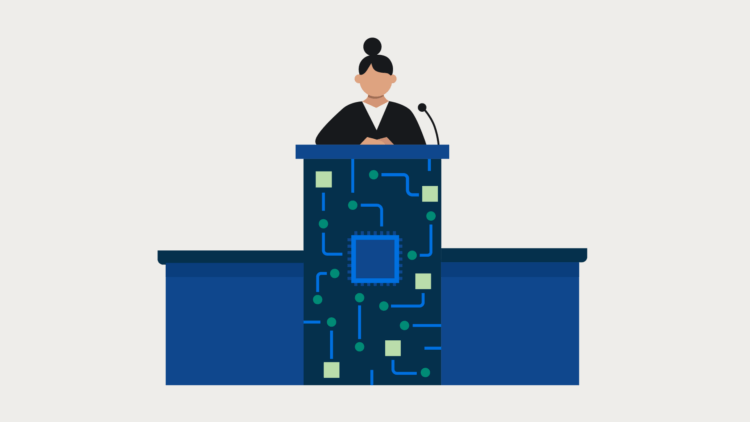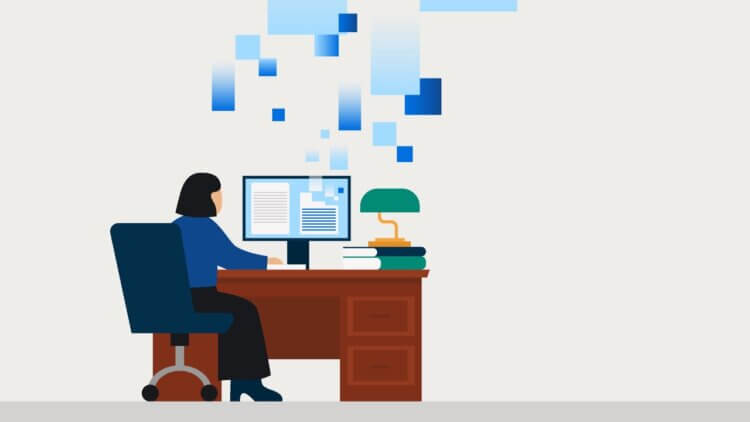Treating individuals pretty and equitably when resolving battle or disputes might seem to be widespread sense, however it doesn’t all the time occur in apply—significantly within the justice system
On this submit, we’ll discover procedural justice and why it’s necessary within the apply of legislation and the courtroom. We’ll additionally focus on the function know-how can play—each in dangers and rewards—for authorized professionals seeking to enhance procedural justice.
Want extra time to give attention to the areas of your apply the place you wish to make a much bigger impression? AI might help you velocity up routine duties to unlock house for strategic considering. Be taught extra about Clio Duo, your future AI-powered authorized associate.
What’s procedural justice?
Procedural justice refers to the concept treating individuals pretty and equitably when resolving disputes fosters extra constructive perceptions of these processes—whatever the final result. It emphasizes respect, trustworthiness, neutrality, and listening when making selections and following processes, which in the end helps construct belief and promote greater perceptions of equity.
Procedural justice will be put into apply throughout numerous programs the place authority figures make selections, resembling in employer/worker relations, disputes in instructional settings, and the justice system.
When individuals really feel that they’ve been handled pretty and with respect throughout decision-making, belief, and compliance are constructed.
Nonetheless, adopting a procedural justice method requires individuals inside programs to make a deliberate, intentional effort to prioritize equity, respect, transparency, and listening. And in a discipline as busy and complicated because the justice system, that may be troublesome to implement.
What is an effective instance of procedural justice?
An instance of procedural justice within the courtroom could be so simple as offering an interpreter to somebody showing at visitors court docket if English was not their first language.
On this instance, an interpreter lets the particular person totally take part within the course of by permitting them to inform their facet of the story, in addition to ask and reply questions precisely.
This fashion, whatever the final result of their visitors case, the particular person’s expertise in court docket shall be extra respectful and truthful.
One other instance of procedural justice is different dispute decision (ADR) processes, resembling mediation, arbitration, and impartial analysis, which permit litigants to make use of the help of a impartial third get together to assist resolve a authorized dispute in a extra collaborative house.
By providing a much less adversarial different to resolving disputes in court docket at trial, ADR processes assist give litigants a way of voice and prioritize neutrality and respect.
What are the 4 pillars of procedural justice?
As we’ve touched on within the above examples, for individuals to have the ability to understand their expertise as simply, their interactions with decision-makers ought to mirror the next 4 key rules:
Respect—Everyone seems to be handled with dignity, respect, and equity.
Belief—Determination-makers show reliable motives and foster confidence within the decision-making course of.
Neutrality—Choices are unbiased, utilized the identical solution to everybody, and clear of their reasoning.
Voice—Folks have the chance to precise themselves, ask questions, and inform their facet of the story.
The significance of procedural justice in legislation
When people interacting with the justice system understand that they’re being handled pretty and have a voice within the course of, they’re extra more likely to settle for authorized outcomes, adjust to court docket orders, and comply with the legislation going ahead—regardless of the result of their case.
Procedural justice within the courtroom
As prison justice reform advocate Choose Victoria Pratt spoke of in her keynote on the 2024 Clio Cloud Convention, prioritizing dignity and respect for everybody is essential to constructing a tradition of belief—and that’s very true within the courtroom.
The key to this energy of procedural justice is all about peoples’ perceptions of belief and equity.
Analysis means that when individuals make total judgments concerning the legitimacy of individuals in authority positions, they’re extra involved about procedural equity—or how pretty they had been handled—than concerning the final result of the encounter.
So, when these in authority deal with individuals with respect and equity, they’ll construct belief. Put merely, individuals who understand procedural justice of their justice system usually tend to adjust to guidelines and belief within the legitimacy of establishments.
Procedural justice and the intersection of know-how

For these attempting to use a procedural justice lens to their processes within the justice system, know-how could be a useful device—or, doubtlessly, a hindrance—relying on the way it’s used.
How is know-how aiding the justice system?
As Choose Pratt defined on the Clio Cloud Convention, know-how has the potential to extend entry to justice, particularly in relation to underserved communities.
“The New York court docket system automated processes to assist marginalized people file complaints and navigate the system extra simply,” she shared. “I noticed how know-how can create significant experiences for these intimidated by the authorized course of.”
Equally, take synthetic intelligence (AI), which, in line with this yr’s Authorized Developments Report, 79% of authorized professionals now use in some capability of their authorized apply.
Expertise like AI might help bridge the hole for entry to justice in cases like real-time translation, which may make it simpler for individuals from whom English isn’t their first language or who’ve listening to impairments to make sure they’ve a voice and alternative to be heard and ask questions within the authorized course of.
How is know-how hindering the justice system?
It’s additionally necessary to think about how AI can doubtlessly hinder procedural justice, significantly if it’s used with out cautious human oversight.
Our instance of utilizing AI for real-time translation reveals the necessity for human oversight to make sure AI instruments are efficient and truthful.
Nonetheless, if somebody makes use of an AI system for translation and not using a human checking for nuances in slang in language, there might be misunderstanding in court docket proceedings—which might have the alternative of the supposed impact, doubtlessly resulting in unjust outcomes and eroded belief.
AI programs also can include systemic biases, which suggests utilizing AI outcomes with out human reflection and oversight can additional perpetuate and amplify current inequities.
“AI can help us, however we have to critically analyze its outcomes. It’s very important to have the widespread sense to look past the information and think about different elements that in the end predict human conduct,” defined Choose Pratt.
The function of AI in procedural justice

So, whereas authorized professionals might use AI to assist them sift via giant volumes of authorized information to assist streamline processes and unlock time to give attention to delivering justice to purchasers, a human should analyze and consider the outcomes of AI searches. Primarily, in legislation, AI ought to all the time be used to help, to not choose.
Be taught extra concerning the potential advantages and challenges of AI within the courts in our article “Synthetic Intelligence in Courtrooms.”
AI is a device that may assist authorized professionals work extra effectively and enhance entry to justice and procedural justice, however it’s not a substitute for the oversight and considerate consideration of people.
Take Clio’s AI-powered authorized associate, Clio Duo. With Clio Duo, you’ll be able to automate routine duties and prioritize duties to save lots of time, which you’ll dedicate to strategic work and guarantee purchasers really feel heard.
Due to AI, legal professionals can now give attention to purchasers, resolve circumstances quicker, and assist extra individuals, which could have an enormous impression on the entry to justice hole and enhance the authorized system for all.
Last ideas on procedural justice
A part of the explanation why procedural justice appears so widespread sense is as a result of it ought to be: treating individuals with dignity, respect, and equality ought to be the norm in our establishments. Sadly, with a posh justice system, we will’t take procedural justice with no consideration.
With the intention to obtain procedural justice—and construct belief—within the legislation and courtroom, individuals have to really feel a way of equity and equality after they work together with authorities. In lots of circumstances, this requires ongoing coaching and lively effort by organizations and people, together with authorized professionals. If achieved, nonetheless, the impression of procedural justice might be important to particular person purchasers and to the group.
Need to discover methods to make use of AI mindfully in your apply—and unlock extra time in your day to give attention to purchasers? Be taught extra about Clio Duo and e book a demo as we speak.
What are the 4 rules of procedural justice?
The 4 rules of procedural justice are treating individuals with dignity and respect, displaying reliable motives, sustaining neutrality and making unbiased selections, and giving voice to individuals’s tales and questions.
We printed this weblog submit in December 2024. Final up to date: December 12, 2024.
Categorized in:
Enterprise




![JOB POST: Associate – Indirect Tax Litigation & Advisory at Economic Laws Practice, Mumbai [2 – 4 Years PQE]: Apply Now!](https://i2.wp.com/cdn.lawctopus.com/wp-content/uploads/2025/05/Economic-Laws-Practice-ELP.jpeg?w=350&resize=350,250&ssl=1)
















![JOB POST: Associate – Indirect Tax Litigation & Advisory at Economic Laws Practice, Mumbai [2 – 4 Years PQE]: Apply Now!](https://i2.wp.com/cdn.lawctopus.com/wp-content/uploads/2025/05/Economic-Laws-Practice-ELP.jpeg?w=120&resize=120,86&ssl=1)
